8 Interesting Facts About Sandhill Cranes
Updated: Oct. 27, 2022
Learn sandhill crane facts. Did you know sandhill cranes mate for life? These prehistoric birds have been around for 2 million years.
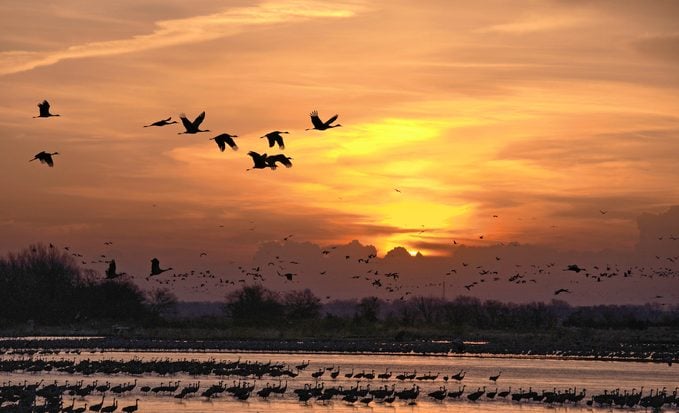
Sandhill Crane Migration
1. During migration, 75 percent of the total population of sandhill cranes can be found along a 75-mile stretch of the Platte River in Nebraska. Check out more birding hotspots for spring sandhill crane migration.
Sandhill Crane Nest
2. Both parents build a nest from cattails, sedges and grasses, but it’s unknown which parent chooses the nesting site. Nests can be up to 40 inches across and 6 inches high. Learn about 8 different kinds of bird nests and how to spot them.
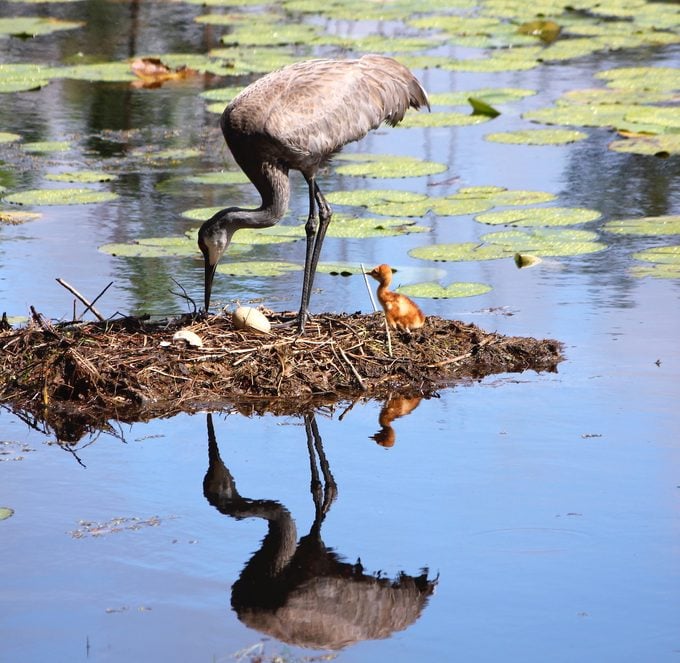
Sandhill Crane Eggs
3. A female sandhill crane usually lays two pale-colored eggs with brown markings. She shares incubation duties with her mate for up to 32 days. Meet the best bird dads around.
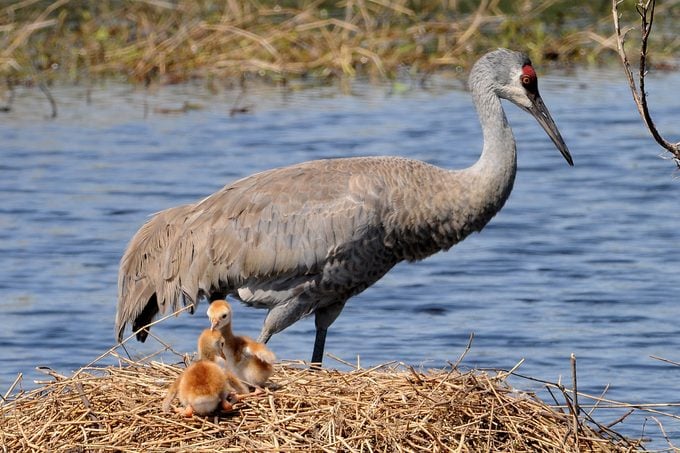
Baby Sandhill Cranes
4. Sandhill crane offspring can be ready to leave the nest and even start swimming just eight hours after they hatch. Although the chicks are independently mobile, they will stay with their parents up to 10 months after being born. Check out more adorable photos of bird mothers with babies.
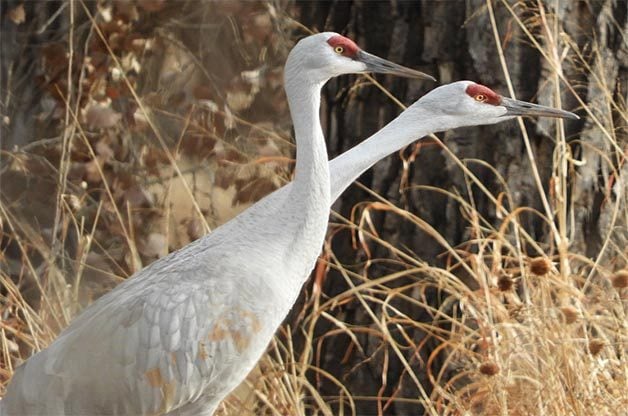
Prehistoric Birds
5. A sandhill crane fossil that was found in the Macasphalt Shell Pit in Florida and is estimated to be 2.5 million years old. Fossils found on the central flyway in Nebraska date back even further.
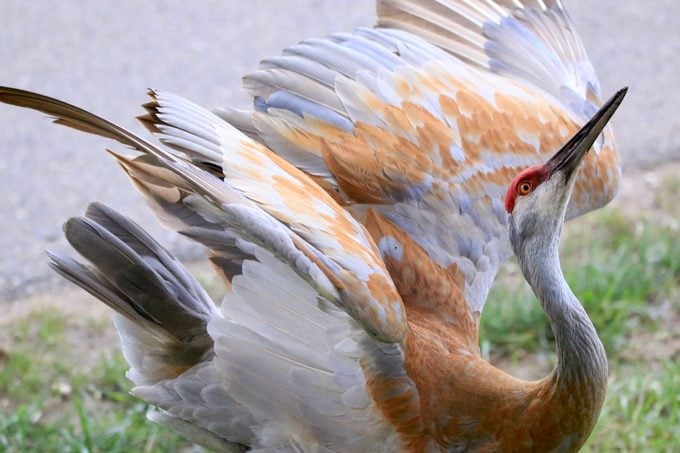
Do Sandhill Cranes Mate for Life?
6. Sandhill cranes mate for life and attract their partner via a courtship dance with moves like jumping into the air, bobbing their heads and stretching their wings to span up to 7 feet. Check out sweet photos that show how birds flirt and attract mates.
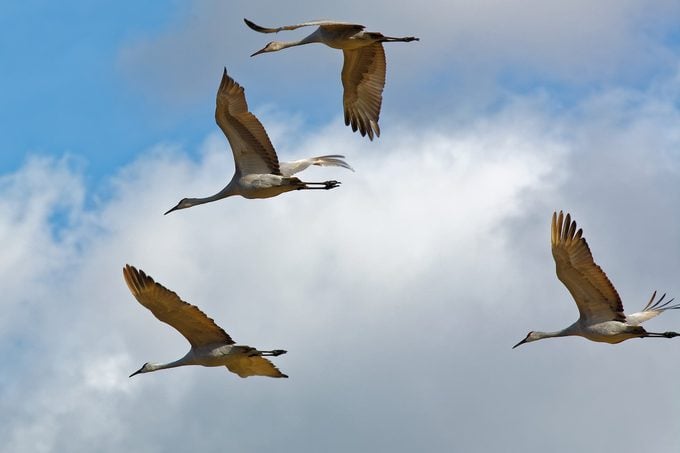
Sandhill Crane Flying
7. During migration, these cranes may travel more than 200 miles a day. They’re fast fliers, reaching speeds of up to 35 miles per hour. Learn about bird migration patterns that have changed.
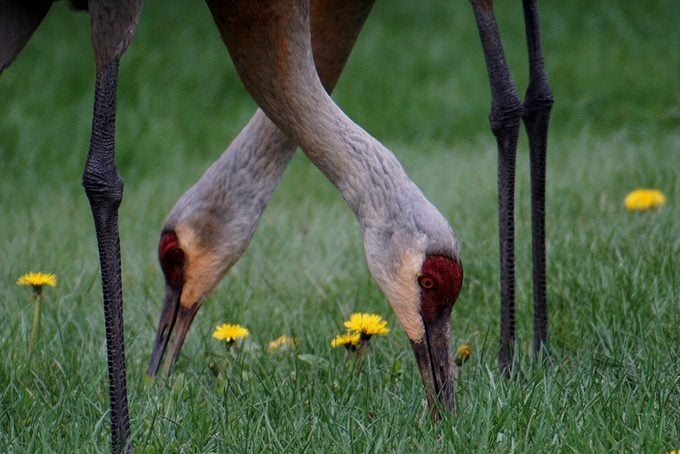
What Do Sandhill Cranes Eat?
8. Cranes are large birds, but don’t be afraid of them. Most of their diet (90 percent) is plant material, including waste grain, roots, berries, and nuts. Insects and snails are on the menu, too.
Next, learn about 10 egrets and herons found in North America.




















